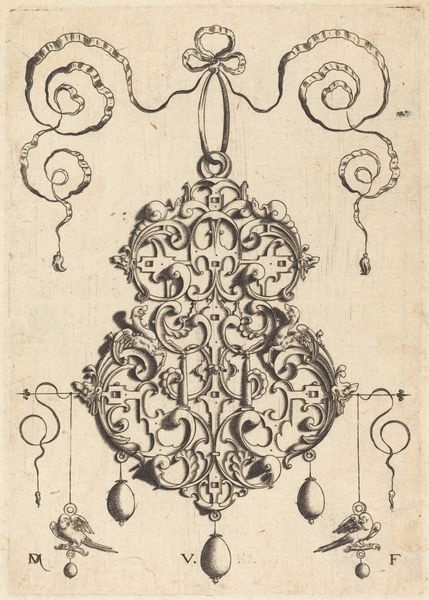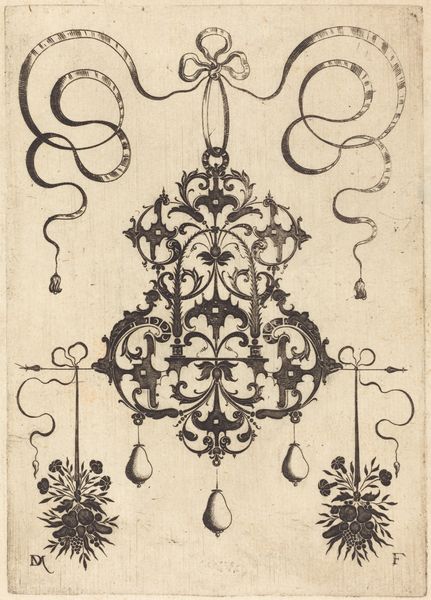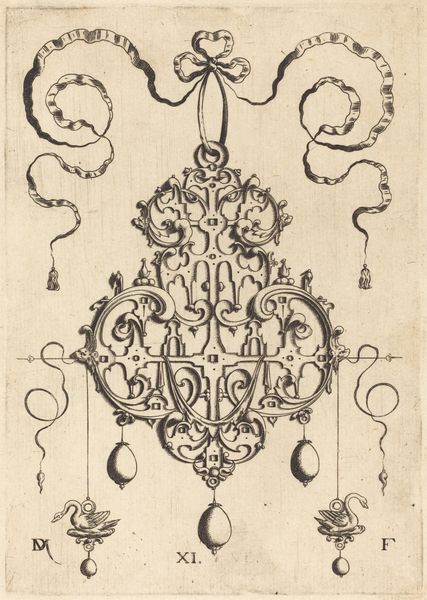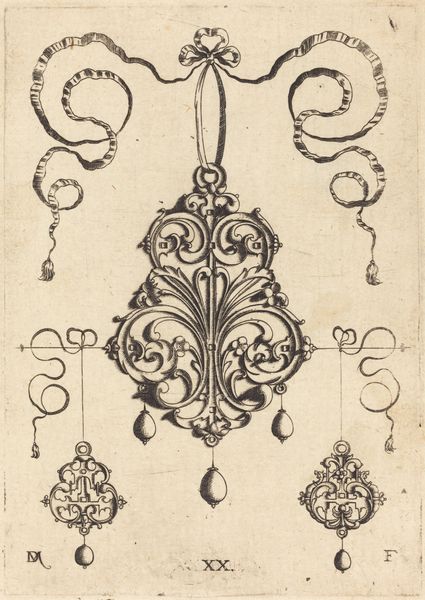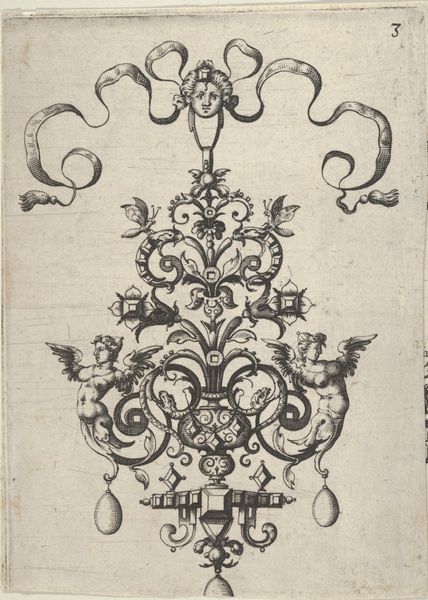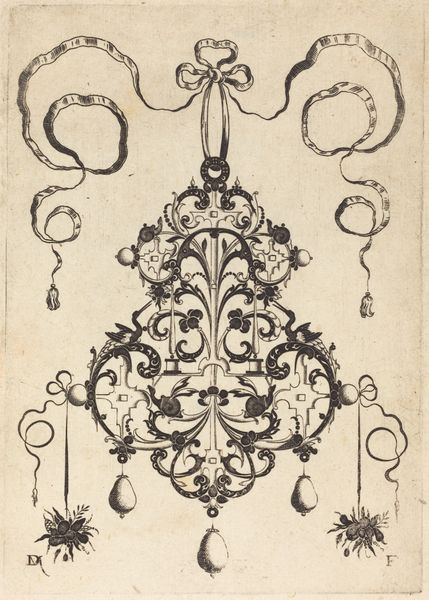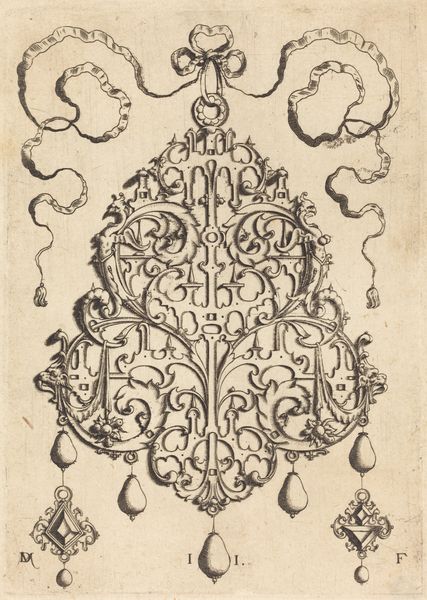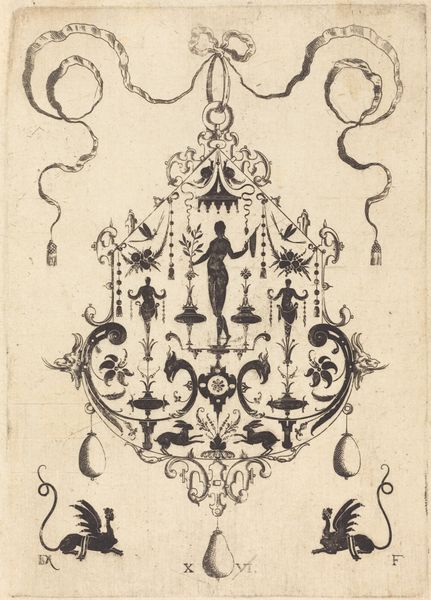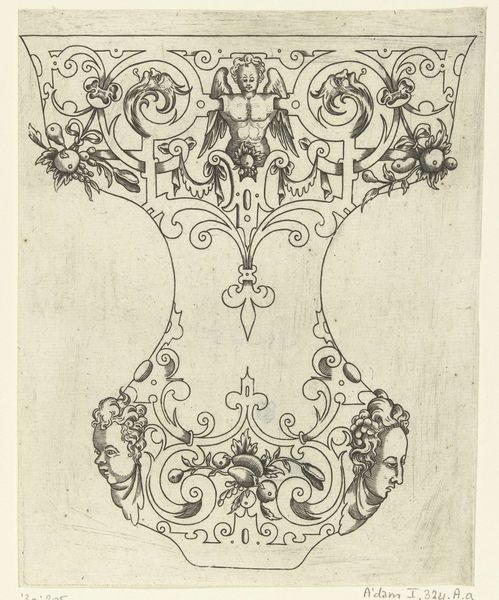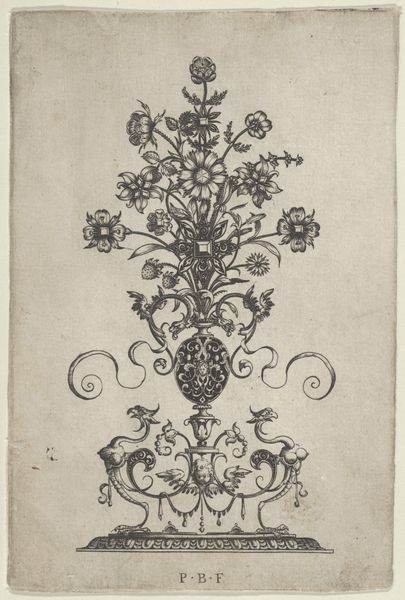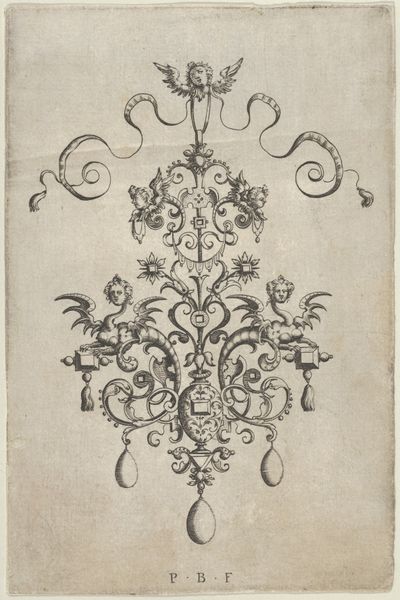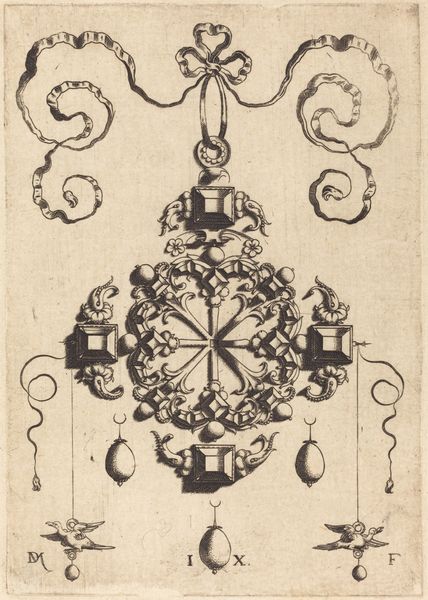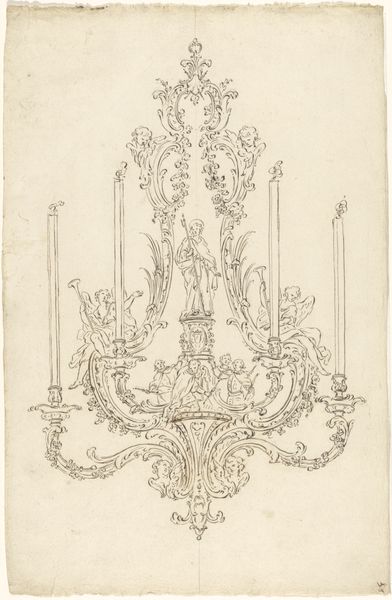
Strapwork Pendant with Two Eagles as Earringsat Left and Right
0:00
0:00
drawing, print, ink, engraving
#
drawing
#
baroque
#
pen drawing
# print
#
pen illustration
#
old engraving style
#
ink
#
line
#
pen work
#
sketchbook drawing
#
engraving
Copyright: National Gallery of Art: CC0 1.0
Curator: This print, likely from the late 16th or early 17th century, is entitled "Strapwork Pendant with Two Eagles as Earrings at Left and Right", and is attributed to Daniel Mignot. Editor: It has the curious allure of a magic sigil! All flowing lines, intricate embellishments. Dark lines on aged paper…I want to say 'Renaissance grunge.' Curator: More specifically, we see a Baroque sensibility. Note the medium: engraving, likely etched in ink. Strapwork, as you see, emulates cut leather or metal bands, incredibly fashionable at the time. This kind of ornamental design shows the impact of both Italian and German metalwork traditions, meant to circulate as design exemplars for craftsmen. Editor: The ribbon on top…it feels so frivolous, so performative. I wonder, did they really think these patterns elevated everyday life? It’s not about function, just decoration…it's almost a statement in pure aesthetics. Curator: Precisely! Objects had symbolic value alongside practical usage. Engravings like this functioned as prototypes. Craftsmen could take design elements from prints and adapt them to various materials--goldsmith work, architectural details, furniture inlays. The print acts as a means of mass production for visual ideas, making luxurious design available across wider social circles, impacting skilled laborers downstream. Editor: Thinking about the hand that guided the engraving tool, there is such control but a delicate fragility at the same time...almost as if the eagle earrings will break with any wrong move. Is that sense of controlled chaos intended? Curator: The technical skill would have been highly prized. These kinds of pendants were symbols of wealth and status. Remember too, printed images at this time were commodities in a growing market; such precision aided reproducibility, thus driving down production cost, so it aided greater consumption of art, broadly speaking. Editor: It brings forth questions around craft versus industry, hand versus machine. Did artisans then feel threatened by such reproductive capability? Curator: Very much so. Artisans both relied on, and were displaced by, the rise of print culture, altering their relationship with materials, markets and access. Editor: Food for thought... a small picture with such large concepts to unpack! Curator: Exactly, demonstrating the power of print beyond pure visual pleasure.
Comments
No comments
Be the first to comment and join the conversation on the ultimate creative platform.
